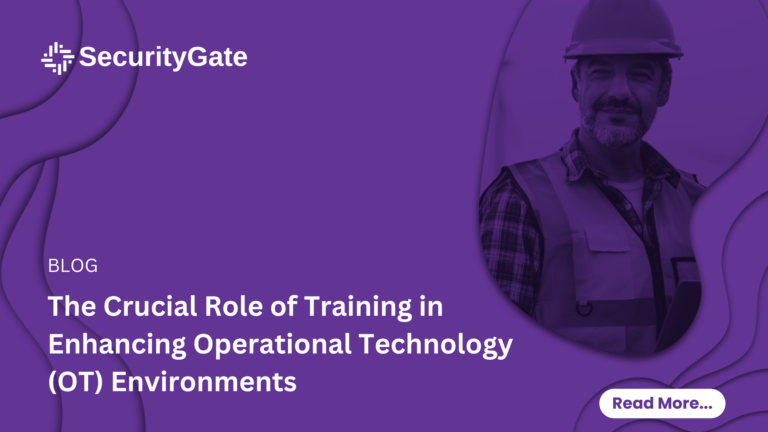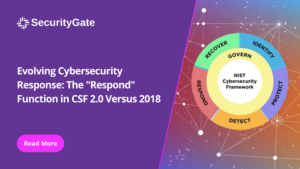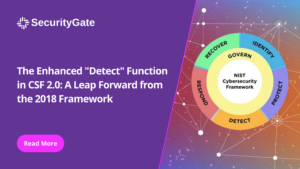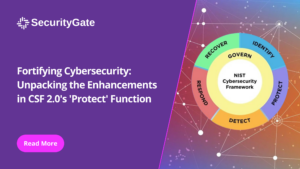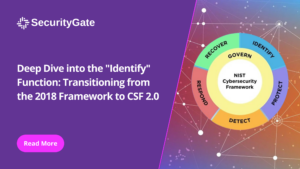In today’s fast-paced and interconnected world, Operational Technology (OT) environments are the backbone of various industries, from manufacturing to energy. Operational Technology (OT) is a critical component of industrial operations, encompassing both hardware and software that work in tandem to monitor and control physical devices. Its significance lies in its ability to drive and optimize industrial processes, making it an essential aspect of modern-day manufacturing and production.
However, as technology evolves, the complexity and risks associated with OT environments also escalate, making training an indispensable tool for ensuring efficiency, safety, and cybersecurity. By investing in training, companies can equip their employees with the necessary skills and knowledge to navigate the ever-changing landscape of OT environments, reducing the risk of downtime, accidents, and cyber threats.
Understanding the OT Landscape
Operational Technology systems are integral to controlling and monitoring industrial processes. They range from programmable logic controllers (PLCs) in a manufacturing plant to control systems in a power grid. Unlike traditional IT (Information Technology) systems, OT systems directly impact the physical world, which brings unique challenges and requires specialized knowledge to manage effectively.
The Significance of Training in OT Environments:
- Enhancing Safety: OT systems often control processes that can be hazardous if mishandled. Training personnel in the safe operation of these systems is vital to prevent accidents and ensure the well-being of employees and the public.
- Improving Efficiency: Skilled operators can significantly optimize the performance of OT systems. Investing in training using the latest technologies and best practices often leads to more efficient operation, reducing waste and increasing productivity.
- Securing Against Cyber Threats: As OT systems become more interconnected with IT networks, they are increasingly vulnerable to cyberattacks. Cybersecurity training specific to OT environments is crucial to protect critical infrastructure against threats.
- Compliance with Regulations: Many industries with OT environments are subject to stringent regulatory requirements. Training ensures that employees know these requirements and that operations comply with relevant laws and standards, such as the NIST (National Institute of Standards and Technology) Cybersecurity Framework (CSF).
NIST CSF and Its Relevance to OT Training
The NIST Cybersecurity Framework provides guidelines to help organizations manage cybersecurity risks. While initially created with IT infrastructure in mind, its relevance to OT environments has grown with the convergence of IT and OT. Training in NIST CSF implementation is vital for organizations to understand their cybersecurity risk posture and integrate these standards into their operational practices.
Real-World Application of Training in OT
Practical training in OT environments often involves scenario-based learning, where employees simulate real-world situations. This approach helps develop practical skills that are directly applicable to the challenges faced in daily operations. For example, training in responding to a cybersecurity incident in an OT environment can be crucial for minimizing damage in the event of an actual breach.
The Future of OT Training
As technology continues to advance, training will need to keep pace. The future of OT training likely includes more immersive and interactive methods, such as virtual reality simulations, to provide hands-on experience in a safe and controlled environment. Additionally, continuous training will become more critical as OT systems and the threats against them evolve.
Interested in learning more?
Here are seven (7) additional resources to learn more about enhancing your training in OT Environments:
ICS Cybersecurity Training for Control System Operators by SANS Institute
This course provides hands-on training in ICS cybersecurity for control system operators. It covers ICS security principles, vulnerability management, incident response, and cyber threats.
How to Enhance the Cybersecurity of Operational Technology (OT) Environments by McKinsey & Company
This article overviews the challenges of securing OT environments. It discusses three fundamental principles for enhancing OT cybersecurity: strengthening technological foundations, assigning clear responsibilities, and increasing risk-aware capabilities and mindsets.
How to Become a Cyber Consultant in 100 Days
This LinkedIn Webinar discusses how OT professionals can confidently boost their technical skills with practical training strategies.
Operational Technology Security: Trends, Challenges, and Solutions by SANS Institute
This white paper discusses the current state of OT security, including the trends, challenges, and solutions. It also provides a framework for developing an OT security program.
This guide provides an overview of ICS cybersecurity, including the threats, vulnerabilities, and mitigation strategies. It also discusses the roles and responsibilities of operators and vendors in securing ICS systems.
This document provides a framework for managing cybersecurity risks in ICS environments based on the NIST Cybersecurity Framework (CSF) and is tailored to the specific needs of ICS environments.
This course introduces OT cybersecurity, including the threats, vulnerabilities, and mitigation strategies. It is designed for OT professionals who need to understand the basics of OT cybersecurity.
At SecurityGate, we aim to Empower Cyber Professionals to Protect the World’s Critical Infrastructure. To do so, training in OT environments is not just a matter of enhancing efficiency and compliance; it is a critical investment in safety, security, and the future resilience of industries reliant on operational technology. As OT systems continue to evolve and integrate more deeply with IT systems, the need for specialized, up-to-date training will only grow. Organizations that prioritize and invest in robust training programs will be better positioned to meet the challenges of the modern industrial landscape.
To learn more about SecurityGate, subscribe to our Newsletter.
